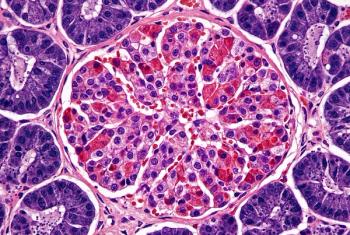
Risk Factors for T1D, T2D Vary in Key Ways, Review Finds
Socioeconomic factors are a key risk factor for Type 2 diabetes, but a new analysis says the same is not true when it comes to Type 1 diabetes.
Diabetes management requires tailored interventions based on the unique risk factors for Type 1 and Type 2 diabetes (T1D and T2D), according to a new report.
The report, which was
The prevalence of both T1D and T2D has risen in recent decades. Corresponding author Sayan Bandyopadhyay, MBBS, of India’s Mother Multispecialty Hospital, and colleagues, noted that more than 10% of the worldwide adult population has diabetes mellitus. They noted that incidence rates have risen in particular in high-income countries. In the United Kingdom, for instance, the prevalence of T1D in youth has
However, the increase in prevalence has not impacted the entire population in the same way. For instance, most of the growth in T2D prevalence in the UK has been in the 40-79-year-old age range. And previous research has suggested that ethnicity and wealth can also mediate diabetes risk.
Still, while a significant amount of epidemiological data is available, Bandyopadhyay and colleagues said little attention has been paid to how such disparities ought to impact the way healthcare providers screen and allocate resources for T1D versus T2D. The authors therefore sought to analyze correlations and differences between demographic, socioeconomic and ethnic factors and the two types of diabetes.
The investigators turned to the UK’s National Diabetes Audit, which includes data from 2022-2024 on new T1D and T2D registrations. They used heat maps to look for correlations among several factors, including age bands, Index of Multiple Deprivation (IMD) quintiles and ethnicities.
Bandyopadhyay and colleagues found that new T1D registrations were most likely to come from people under the age of 40, finding a strong correlation between age under 40 and T1D risk (correlation coefficient r=0.82-0.85). There was also a weak correlation between T1D and socioeconomic deprivation (r=0.15-0.18).
In the case of T2D, the authors found a strong correlation with middle (r=0.73-0.75) and old age (r=0.65-0.68) and a strong correlation with being in the “most deprived” quintile on the IMD (r=0.60-0.62).
The investigators noted that the stronger link between socioeconomic status and T2D supports “earlier reports that [T1D’s] autoimmune pathophysiology is less sensitive to social determinants.”
Still, they added that deprivation still affects access to diabetes technology, which in turn can affect long-term health outcomes.”
In terms of age, the authors also found a “modest” rise in the number of T2D registrations among people under the age of 40, which they said may be a consequence of rising rates of obesity.
When the investigators looked at ethnicity, they found that T1D most strongly correlated with being White (r=0.82-0.85), while T2D was most elevated among patients of Asian descent (r=0.45-0.47) and Black patients (r=0.40-0.42). Overall, though, T1D had weaker ethnic correlations, which the authors said makes sense given the autoimmune etiology of the conditions.
The authors said their findings show that support for T1D should focus primarily on pediatric populations, but they added that it is important to expand access to technologies like continuous glucose monitors and insulin pumps to ensure all patients benefit from such interventions.
In the case of T2D, they said community-based screenings in high-deprivation neighborhoods and in ethnic-minority neighborhoods are critical. They added that targeted interventions focused on diet and exercise will also yield positive benefits.
“For T2D, integrating social prescribing, subsidized community-based lifestyle programs and outreach by health workers in deprived areas can address upstream determinants and improve patient engagement,” they said.
The authors said longitudinal studies should also be undertaken to better understand how and why deprivation and ethnicity are related to diabetes risk.
Newsletter
Get the latest industry news, event updates, and more from Managed healthcare Executive.






















































